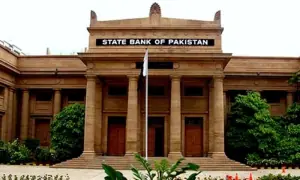Pakistan’s debt position more sustainable than rupee figures suggest, says finance ministry
The Ministry of Finance has reiterated that Pakistan’s debt trajectory “is more sustainable today than suggested by headline rupee figures”, citing improvements in the debt-to-GDP ratio, early repayments of loans, lower interest costs, and a stronger external account.
In a statement released by the Finance Division on Tuesday, the finance ministry said it continues to centre its debt management strategy on aligning the public debt-to-GDP ratio to the Fiscal Responsibility and Debt Limitation Act, minimising refinancing and rollover risks while generating interest savings to support sustainable public finances.
“The Ministry of Finance, while noting recent commentary about public debt levels, reiterates that absolute numbers, which will naturally rise with inflation, are not meaningful indicators of sustainability in isolation,” read the statement.
The ministry was of the view that the appropriate measure of sustainability is looking at debt relative to the size of the economy, i.e., debt-to-GDP, not absolute rupee amounts.
“By this yardstick, which is followed globally, Pakistan’s position has actually improved over the last few years, with the debt-to-GDP ratio declining from 74% in FY22 to 70% in FY25. At the same time, the government has reduced rollover and refinancing risks and saved taxpayers substantial interest costs,” it said.
The Ministry of Finance also highlighted the government’s focus on early repayments and risk reduction, saying that the government prepaid Rs2,600 billion before maturity across commercial and central bank obligations - reducing rollover and refinancing risks and generating hundreds of billions of rupees in interest savings.
Similarly, on the fiscal side, the ministry noted that the federal fiscal deficit stood at Rs7.1 trillion in FY25, lower than Rs7.7 trillion in FY24. “As a share of GDP, the fiscal deficit fell to 6.2% (consolidated deficit: 5.4%) in FY25, from 7.3% (consolidated deficit: 6.8%) in FY24, with Pakistan posting a historic primary surplus of 2.4% of GDP, or Rs2.7 trillion, for the second consecutive year.
“Consequently, total debt stock rose 13% year-on-year, below the 17% average growth of the past five years,” it said.
The ministry said to lower interest burden, prudent liability management, along with a reduction in interest rate in FY25, delivered over Rs850 billion in interest expense savings compared to the budgeted amount.
In the current fiscal year’s budget, interest allocation is Rs8.2 trillion, down from Rs9.8 trillion in FY25.
The finance ministry shared that an early retirement of debt has led to strengthening of the debt maturity profile, thereby reducing refinancing and rollover risks while improving sovereign debt resilience.
“In this regard, public-debt average time to maturity has improved to about 4.5 years in FY25 compared to about 4 years last year; within this, domestic debt average time to maturity has also risen to over 3.8 years from about 2.7 years.
“The consequential effect of the prudent fiscal management has resulted in a positive impact on the external side, where the current account position recorded a $2 billion current account surplus in FY25 - the first in 14 years - reducing gross external financing needs,” it said.
The ministry shared that a part of the increase in external debt is due to balance of payments support, e.g., IMF Extended Fund Facility inflows and non-cash commodity facilities such as the Saudi Oil Fund, that do not require rupee financing.
“Approximately, Rs800 billion of the external debt increase is a valuation effect from exchange-rate movements, not new net borrowing,” it said.
The ministry concluded that the government continued to focus on debt-to-GDP reduction, early repayments, lower interest costs, and a stronger external account.
For the latest news, follow us on Twitter @Aaj_Urdu. We are also on Facebook, Instagram and YouTube.






















Comments are closed on this story.